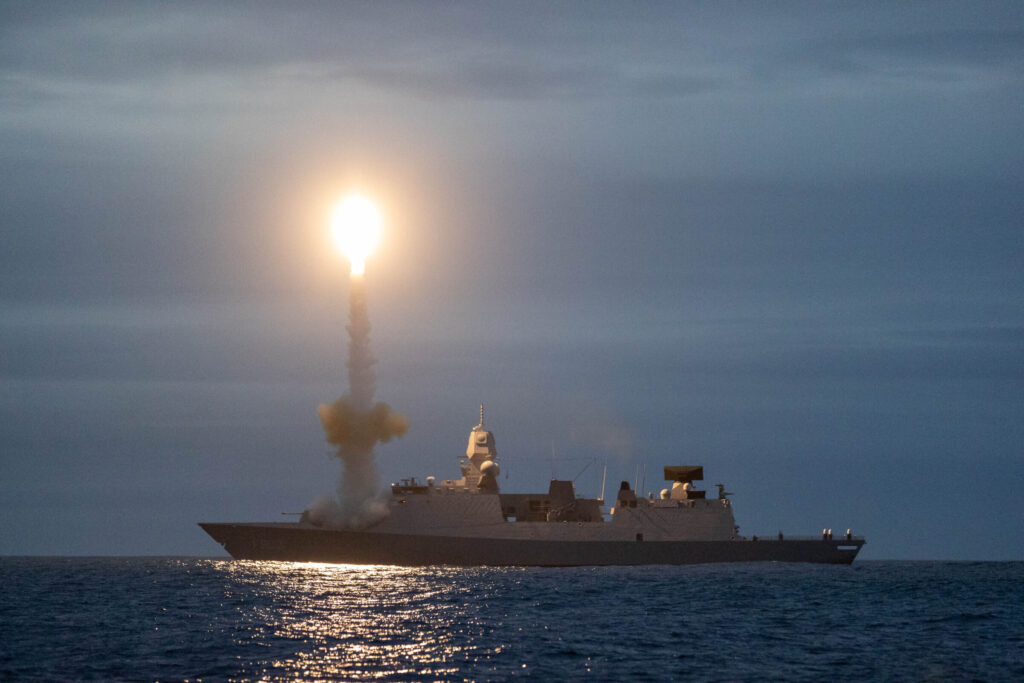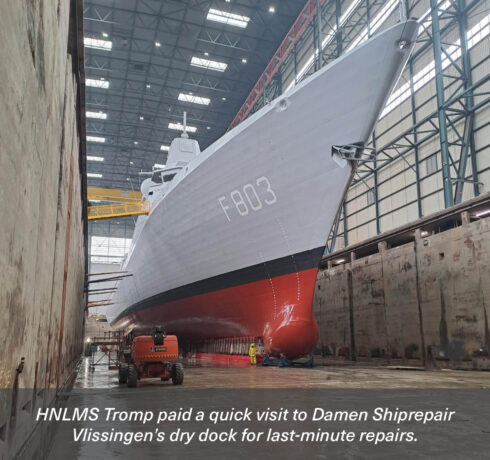Prior to its deployment in NATO’s Formidable Shield, the Royal Netherlands Navy frigate HNLMS Tromp called on Damen Shiprepair Vlissingen for a number of small, yet crucial, last-minute repairs at the end of April. The yard quickly mobilised its personnel and facilities in response, thus ensuring that the 144-metre-long vessel (one of the Royal Netherlands Navy’s De Zeven Provinciën-class frigates) could take part in this biennial naval exercise involving around 15 ships and dozens of aircraft from ten NATO and partner nations.
The HNLMS Tromp arrived at DSV on the evening of 20 April and was transferred to the yard’s covered dry-dock early the following morning, where DSV’s team worked in two shifts to carry out the scope of work. The bulk of the tasks focused on the vessel’s impressed current cathodic protection (ICCP) system, which uses a network of strategically positioned anodes and an external power source to protect the hull and other critical components against saltwater corrosion.
 During the NATO exercise Formidable Shield, HNLMS Tromp fired two missiles.
During the NATO exercise Formidable Shield, HNLMS Tromp fired two missiles.
The HNLMS Tromp’s ICCP system consists of reference electrodes and several impressed current anodes, all connected to a power unit. “The reference cells measure the underwater electrical protection potential and, based on this data, the power unit regulates the required output to the anodes. The resulting impressed current prevents the corrosion process from taking place,” explains DSV Production Coordinator Harry Godlieb. “We needed to replace almost all of the active anodes and reference cells as well as all the sacrificial zinc anodes in the sea chests, rope guards and streamline caps of the tail shafts.” Besides completing the work on the HNLMS Tromp within the required eleven-day timeframe, DSV also performed painting repair and touch-up jobs where necessary, including to the vessel’s silicone anti-fouling hull coating.
In addition to DSV’s scope, the Dutch Naval Maintenance and Sustainment Agency took the opportunity to carry out its own work while docked at Vlissingen. This consisted of work on the vessel’s sonar dome.
Reports from NATO’s Formidable Shield exercise – focused primarily on Integrated Air and Missile Defence – demonstrate that HNLMS Tromp played a significant role. The frigate successfully fired four missiles against both subsonic and supersonic targets. Moreover, the vessel used its radar to detect and track a ballistic missile in space while simultaneously sharing this information with the other participants of the exercise.

